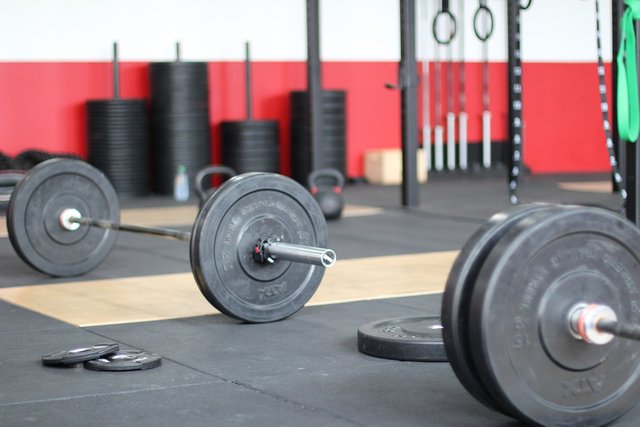What is the optimal times per week to workout?

The 5 day split
A five day split routine is essentially to work out different body parts over a period of five days without working the same body parts on consecutive days. For example the upper body lower body split routine is common or the push pull day routine is common. The scientific literature suggests that the human body only requires a maximum of 48 hours to recover with 36 hours being the typical recovery time. This means at the absolute minimum 24 hours rest time is a requirement which is why split routines came into popularity. It is possible to do a full body routine but again it would require doing the full body workout with 36 hour rest periods in between which would be roughly 3 workouts per week total vs 5 total.
The 7 day split
The 7 day split is the same format as the five day split only with slightly higher intensity at the beginning of the week and reduced intensity toward the end as fatigue is cumulative. If we think of fatigue as being a cup which gets filled over a microcycle or mesocycle then the high intensity routine over 7 days straight will result in a full cup much faster. If we think of an overflowing cup as over training then we could even see regression in lifts if a person trains week after week without what is known as a deload. The ideal is to train and slowly ramp up intensity in terms of overload until the body reaches a physical peak which according to literature typically happens after 3 or 4 weeks of training (toward the end of what is known as a mesocycle).
Which is better?

This really depends on the body and the discipline of the person. If you are the sort of person who feels more alive after time in the gym or who just enjoys working out then the 7 day split may be better for you. One benefit of high frequency training is that you may stop getting DOMs. DOMs seem to be a result of being under trained so for example if you train legs once per week then you'll be much more sore than if you train legs daily. Once your body adapts which can take months or years depending on your genes; you may stop getting sore at all at this point. Soreness is not an indicator of muscle growth or a good training session; it merely indicates that the muscles were sufficiently shocked by a new exercise the body wasn't used to.
The 7 day routine may have the benefit of releasing more natural growth hormone. Depending on the volume, muscle growth (muscle hypertrophy) may be greater or lesser. There seems to be a natural correlation between volume (measured by sets x reps x weight = V) and progress (measured as muscle growth). There also seems to be literature which indicates a minimum effective volume (MEV) and a maximum recoverable volume (MRV). The MEV is the least amount of volume which allows for muscle growth. The MEV can be thought of as the minimum effective dose of training stimulus in order to trigger a response of muscle adaptation.
- The total volume is what matters (per week, per body part) for muscle adaptation.
- Overtraining can happen but it takes weeks of over reaching (training beyond the maximum recoverable volume)
- Occasionally training without enough rest is not bad just as long as after you do see your numbers lagging for a couple of weeks that you deload (simply don't work out that body part for a week or two).
- Training 5 or 7 days a week is up to preference and it is possible to get the same result by compressing it to 5 intense days or you can go 7.
- There may be a hypothetical benefit in terms of growth hormone release by training for 7 days. This depends on how you feel personally after you train. If you feel the pump, if you feel more alive, if you feel strong, then there could be something to it.
- Cardio can be done not just 7 days a week but multiple times a day. At the same time it is much easier to over train doing cardio.
- Cardio + weight lifting for 7 days a week could be a bad idea unless a person is very over weight. This is because if a person does not have enough body fat stores (high enough body fat percentage) they will likely lose muscle and not see much gains by doing cardio and weight lifting on the same day.
References
Schoenfeld, B. J., Ogborn, D., & Krieger, J. W. (2017). Dose-response relationship between weekly resistance training volume and increases in muscle mass: A systematic review and meta-analysis. Journal of sports sciences, 35(11), 1073-1082.
I have not missed a day in 7 months of my training routine (4day split) and combined with my work I have gotten a burnout and had to stop training for a week.
Today I lifted heavier than Hercules.
The golden ratio to working out if you have tons of time? 4 days from personal experience. It is not too much and not too less.
5 Days, 6 days and 7 days is too much if you have a job. You can sustain that for a couple months till you burn out (which can take weeks or months to get rid of costing you muscle gains).
Here is a picture to show you that I am not only talking (2 months old, I am bigger now, no flexing, no pump):
I seem to have no problem working out and recovering increasingly fast. The only problem I have is joint pain from certain exercises. Not much can be done about that except better form and less weight on certain movements. Joints seem to give out first but fatigue is also cumulative and different body parts fatigue much faster than others.
Some body parts of mine can seem to take almost limitless volume, others I can train 4-5 times a week, and some I can train once or twice a week at best. It's genetics involved I think. For some body parts I never even get sore anymore.
I do think if you have a job to work out 7 days a week can be too much depending on how intense you do it. The more obligations and responsibilities you have the more the workouts may suffer. Sleep disruption can disrupt recovery big time although you can mitigate that in my experience by taking protein right before bed.
Thank you @dana-edwards for this educative post.
The right number of sessions per week differs from individual to individual and largely depends on many factors relating to your body and your training.
Some workout as frequently as their social, family, and professional life will allow.
This gym equipment really looks awesome, it will help in building one's body and also burn fat. Thanks for sharing such an amazing informative piece. It is really good #healthwise. Keep the good work flowing man
Great post man. My point of view on this is that we need to do practice according to our body type, what we want as a result and if we practice some sport we need to be working especially for that sport.
Reading your posts, I think I like the 7-day routine more. Anyway, rest is also a type of practice and we need to do it. We cannot go over our limits and think it will not bounce back in a bad way.... Balance is the key..
Have a great day/evening/night! See ya!
Thank you,It was very useful👍
Nice post...... Thanks for sharing
Thank you very much , I had little idea as of on this matter.While when I was in the gym I usually followed the 5 day split and I did kind of liked it.
Will try out both if I get on again .
is there a difference for older athletes like in their 60s?
also what are DOMs? thanks great post!
Thanks for the post. I like to switch up my workouts every month to ensure my body is not becoming accustomed to the regularity, also I believe you need to keep changing your workouts to keep you mentally engaged. If you continue to do the same sets it can begin to feel like a "chore".
To listen to the audio version of this article click on the play image.

Brought to you by @tts. If you find it useful please consider upvote this reply.
Damn... That's god-awful.